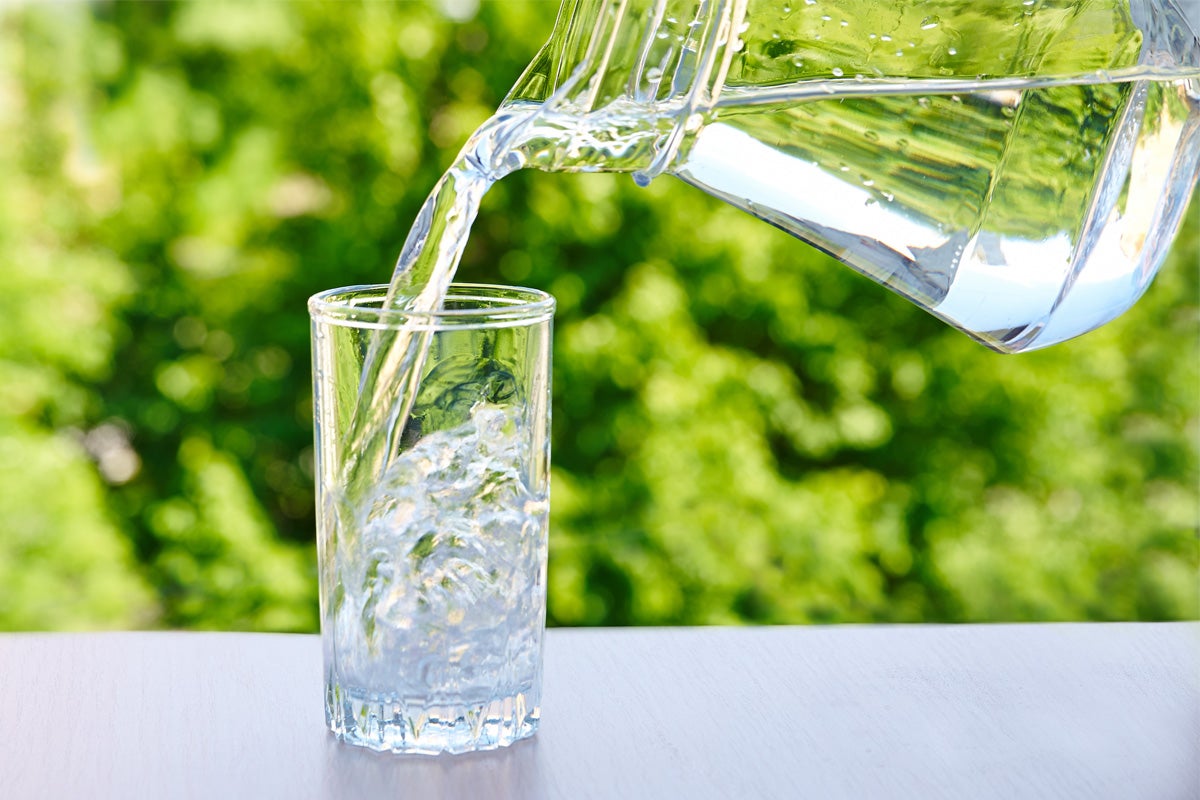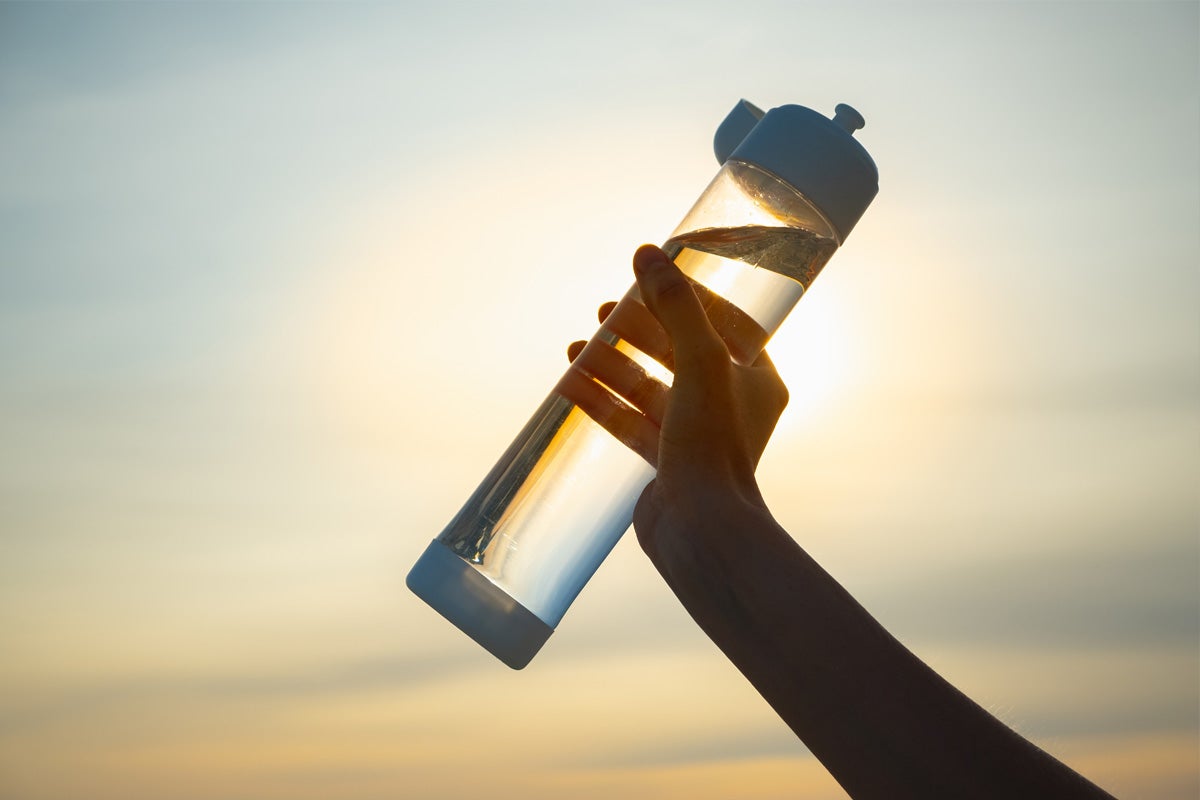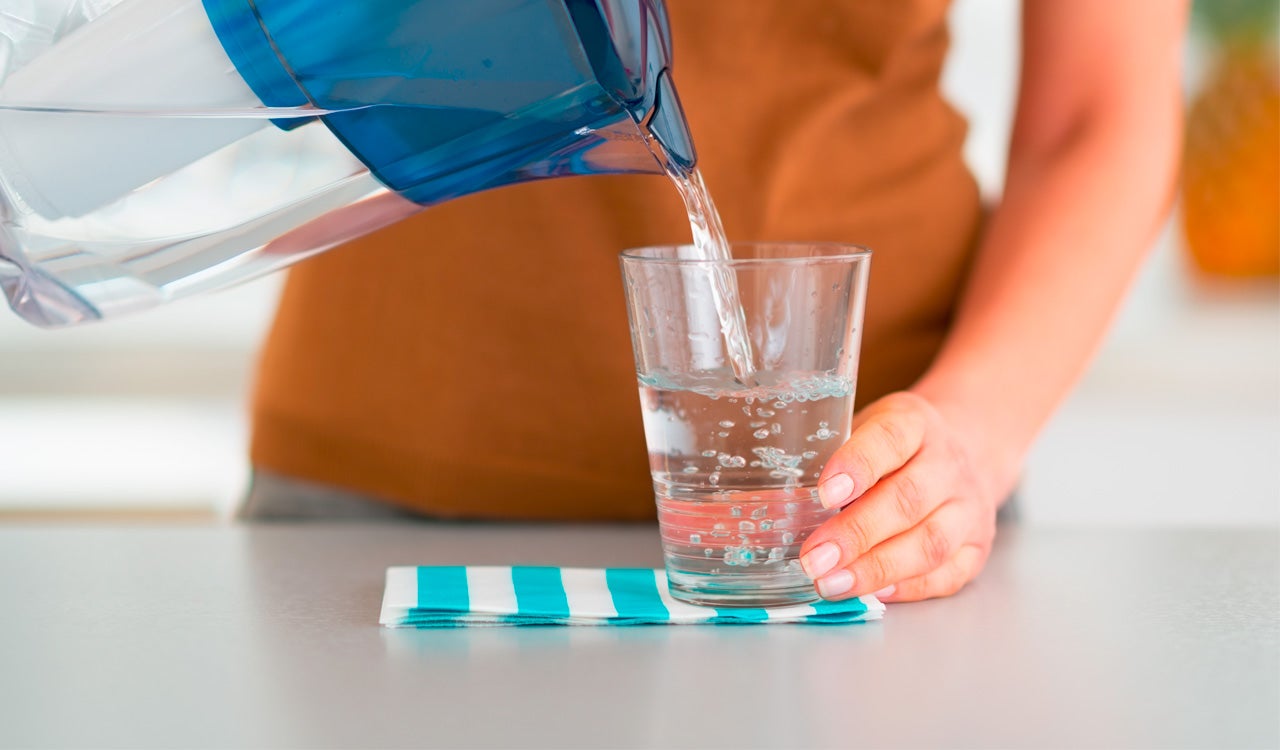9 Hacks To Drink More Water Every Day
Try These Simple Ideas To Drink More Water
April 28, 2022
Many people do not think of water as a nutrient, but it is. In fact, it’s an essential nutrient, meaning we can’t live without it. Of all the nutrients your body needs, water is the nutrient you need in the greatest amount. We use water to quench our thirst, to take our medications, and as an ingredient in some recipes. But what does water actually do for our body?

6 functions of water:
- Regulated body temperature. When you engage in physical activity and perspire, heat escapes your body in the form of water, which helps cool you down.
- Carries nutrients and oxygen to cells. Water dissolves nutrients and carries them, along with oxygen, to your body’s cells and also carries waste products away.
- Moistens body tissues. These tissues include those in your eyes, nose, and mouth.
- Lubricates and cushions joints. The fluid in your joints is mostly made up of water—it helps reduce friction, so your bones don’t grind together.
- Normalizes blood pressure. Dehydration can lead to an increase in heart rate and a fall in blood pressure. Getting enough fluids is important for keeping blood pressure in a healthy range.
- Helps prevent constipation. Water does this by softening your stools.
When you get the physical sensation of thirst, it’s a signal that your body needs water to perform its many functions. However, you shouldn’t drink water only when you are thirsty—your body needs it before that thirst signal.
How much water should you drink?

The amount of water you take in should equal the amount your body loses. If you lose more water than you take in, this can lead to dehydration. Your body loses water through the skin (perspiration), urine, feces, and breath. It is your job to replace this water through drinking fluids and eating foods.
If you take in more water than you lose, this can lead to overhydration. While overhydration (water poisoning) is rare, it can happen to anyone. Drinking too much water usually does not cause overhydration if your body is functioning normally. Certain medications and medical conditions (e.g., kidney disease) can alter your body’s water balance, leading to overhydration.
The Adequate Intake (AI) levels for water are determined for people who are generally healthy. The AI is 11.5 cups per day for women and 15.5 cups per day for men. Keep in mind that these totals include the water you take in through both fluids and solid foods. You typically take in about 20% of the water you need from foods. Therefore to maintain water balance, women should aim for about 9 cups of fluids per day, and men should aim for about 12.5 cups of fluids per day. Remember: This is a general recommendation. If you have a medical condition or special circumstance (e.g., pregnancy and breastfeeding) that can affect your body’s water balance, see a Registered Dietitian Nutritionist (RDN) to help you estimate your needs.
How do you know you’re getting enough water?
Simply check your urine. If you’re well-hydrated, your urine will be a pale yellow color. If your urine is a dark yellow color, you need to increase your water intake.
Americans are not drinking enough water, especially plain water. In fact, in 2011-2014, U.S. adults drank an average of 39 ounces (less than 5 cups) of water on a given day. This can be due to forgetting, being too busy to stop and take a drink, and/or opting for sugar-sweetened beverages like soda. Have no fear—there are plenty of ways to boost your water intake!
Here are 9 hacks to help you drink more water:

#1: Set a daily goal.
Once you determine your water needs, whether that’s the general recommendation or one calculated for you, set a daily goal. To keep on track, use a mobile app to log your water intake throughout the day.
#2: Set reminders.
Setting reminders on your phone will help you remember to drink water before you are actually thirsty. You can even tie in these reminders with already scheduled parts of your day, like your work breaks.
#3: Keep a water bottle with you.
Keeping a water bottle near you at all times can serve as a reminder to drink more water. Keep a bottle in your car, on your desk, and in other areas where you spend a lot of time, like your living room.
#4: Get hydration gear you like.
Having a water bottle with a color or style you like can make drinking water more enjoyable and encourage you to drink more! A large water bottle with time and volume markers is a great choice because it can also help you keep track of your daily goal.
#5: Replace other drinks with water.
If you’re not drinking water, you’re likely drinking other beverages throughout the day like soda or iced tea. Many of these beverages contain sugar and caffeine which can contribute to weight gain and anxiety, respectively. In any instance you would grab one of these beverages, grab water instead.
#6: Add flavor to your water.
If you’re used to drinking sweet drinks, it can be difficult to transition to plain water. Instead, sweeten your water with a zero calorie Liquid Water Enhancer. They come in a variety of delicious flavors, including Sweet Tea, Strawberry Watermelon, and Mandarin Orange. Simply add a squeeze to your water bottle or glass. You can also make a drink recipe using Splenda® Original, Stevia, or Monk Fruit Sweetener—they all contain zero calories!
#7: Try sparkling water.
If you enjoy the fizz of soda but want to avoid the calories and sugar, try sparkling water instead. This can make hydration easier and more enjoyable.
#8: Have a glass with every meal.
When you sit down for a meal, you likely have a drink with it. Well, why not make that drink a glass of water? Pairing a glass with each of your meals can help you reach your daily water goal.
#9: Keep a glass on your nightstand.
Keeping a glass of water on your nightstand helps keep you hydrated throughout the night (if you wake up) and in the morning. Some people struggle with dry mouth at night, so you may be thirsty after a night’s sleep. Hydrate with a refreshing glass of water!
Bonus hack: Eat more fruits and vegetables! Remember that about 20% of your daily water intake comes from foods. Juicy fruits and vegetables, like watermelon and celery, contain more than 90% water!
Written by Holly Moran, MS, RDN, LD, CDCES and member of the Splenda Healthcare Team.

